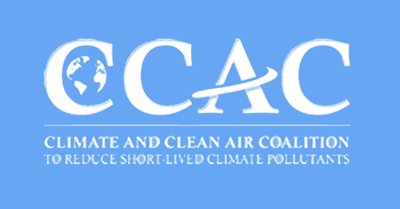Contact: Danielle Grabiel in Geneva: +1.202.441.8371, [email protected] or
Nathan Borgford-Parnell in Washington, DC: +1.202.338.1300, [email protected]
South Africa, other climate vulnerable African countries support
fast action to reduce HFC climate pollutants under Montreal Protocol
“No Need to Reinvent the Wheel”
Geneva, 16 November 2012 – Low-lying island States lead by the Federated States of Micronesia gained new support for their effort to reduce super greenhouse gases know as HFCs under the Montreal Protocol, winning the backing of South Africa, Nigeria, and other climate vulnerable countries in Africa and throughout the world. The progress came as the Parties to the Montreal Protocol on Substances that Deplete the Stratospheric Ozone Layer concluded their annual meeting in Geneva today, in the shadow of the global climate negotiations, which resume later this month in Doha to start negotiations on a treaty to go into effect in 2020.
“Reducing factory-made HFCs under the Montreal Protocol is the biggest and fastest and probably cheapest climate mitigation available to the world today, and absolutely essential to slowing down the punishing climate impacts the world is already experiencing, including climate-enhanced weather events like Super Storm Sandy,” said Durwood Zaelke, President of the Institute for Governance & Sustainable Development. “The Montreal Protocol has already phased out 97 similar chemicals by nearly 100% and has the expertise and experience to immediately phase down HFCs”, he added.
The primary issue at the Montreal Protocol meeting was how to control HFCs, super greenhouse gases that the Protocol has inadvertently encouraged companies to start using as substitutes for the chemicals the Protocol is phasing out, to the great detriment of the climate. Party after Party pointed out the Protocol’s role in promoting the use of HFCs as a reason for the Protocol to now accept responsibility for phasing down the use of these climate pollutants, even though they do not affect the stratospheric ozone layer. All together, 110 Parties now support action on HFCs.
Many countries, including South Africa and Nigeria, supported immediately forming a “contact group” to launch formal negotiations on the HFC phase-down. South Africa, whose strong position came as a welcome surprise, noted that factory-made HFCs are amenable to a phase-down of their production and consumption, which is the approach taken by the Montreal Protocol, and suggested that the treaty was suitable for addressing HFCs. South Africa further noted that there is no need to “reinvent the wheel” by developing such a phase-down under the primary climate treaty, the UN Framework Convention on Climate Change, which aims to reduce the downstream emissions of greenhouse gases, not to phase down their upstream production and use.
The most impassioned plea for fast action on the HFC phase-down came from the Minister of Environment and Energy from the Republic of Maldives, Dr. Mariyam Shakeela, who stated:
It was revoltingly shocking to, to hear some countries say, that this is not the right forum to address this issue. Ladies and gentleman, for countries like Maldives, who are on the front line of climate change impacts every forum is a right forum. We have no choice. No time to spare. So please do not say that this is not the right forum to address what impacts global warming when actions that are promoted in this very forum has negative impacts on climate change affecting lives and livelihood. It is morally wrong not to acknowledge it and address it. … Montreal protocol, Ladies and gentleman, has been hailed for the tremendous climate benefits it has already achieved. Therefore, I urge those who are blind to the inherent link between ozone protection and climate change, not to turn the Montreal Protocol, to a vehicle that promotes HFCs on the premise that other UN Conventions will take care of the problem we have created here. That would be the height of irresponsibility.
China and India and a few others continued to argue that the Montreal Protocol was not the right forum for phasing down HFCs and continued to block formal negotiations. The majority of Parties in Geneva, however, recognized the need for urgent action to slow climate change and found a way around China and India by establishing a “discussion group” to address HFCs, prompted in part by a suggestion from the Russian Federation.
The climate vulnerable Africa Group supported this move as a way to make progress, with the President of the Africa Group, Mr. Marcos Wabi from Benin, stating that, “The African Group welcomes further discussion of phasing down HFCs under the Montreal Protocol.”
The Russian Federation, recalling their early leadership on the Montreal Protocol and continuing concern for atmospheric protection, suggested forming an informal panel to discuss the HFC proposals, a breakthrough that allowed Parties to explain their concerns and propose solutions. Reflecting on the past and future of the Montreal Protocol, Mr. Sergey Vasiliev from the Russian Federation said, “The Russian Federation is proud of its early leadership to address ozone depletion within the Montreal Protocol. We have a high opinion of the Protocol’s approach to phasing out production and consumption and its funding mechanism. Therefore, we understand Parties’ desire to use the Protocol’s experience and existing mechanisms, specifically in regulating the use of HFCs. We encourage Parties to consider how the Protocol can be used to make progress on limiting the growth in production of HFCs.”
He continued, “The Parties who have been reluctant to add HFCs are coming around with suggestions. The Russian Federation would welcome an opportunity to discuss whether a future period of freezing production and consumption of HFCs would be technically and economically feasible as a preliminary step before adoption of more specific controls to phase down and a grace period for A5 and CEIT Parties.” [CEIT stands for “countries with economies in transition.”] [The Russian Federation also gave an award to IGSD’s Dr. Stephen O. Andersen for his work on the Protocol, the first time such award has ever been awarded to a non-Russian. See related IGSD press release here.]
Also urging fast action under the Montreal Protocol, Mr. Chakour Abderrahim, the head of the Moroccan delegation, stated, “The phase down of HFCs under Montreal Protocol is a logical continuation of the phase-out cycle for other fluorinated gases. Understanding the urgency posed by climate change, the Kingdom of Morocco believes that the Montreal Protocol is the competent body and the suitable platform to tackle the issue of HFC production and consumption.” Morocco officially joined the Federated States of Micronesia as co-sponsor of the formal HFC phase-down amendment.
“The Montreal Protocol is now a step closer to getting out of the old HFC technology,” said Zaelke. “The forward looking Parties know that phasing down HFCs is not only right for climate protection, but also for their industries, which need to focus on the new replacement technologies to stay competitive. This is especially true in light of a recent proposal to strengthen European rules on HFCs and other fluorinated gases, which will make it more difficult for backward looking industries to have access to European markets.”
In Brazil earlier this year more than a hundred heads of state signed the Rio+20 declaration, The Future We Want, supporting an HFC phase-down. Since 2011, 110 Parties to the Montreal Protocol have expressed support for action on HFCs, including those who signed the Bangkok Declaration and the Bali Declaration.
The Montreal Protocol is widely regarded as the best environmental treaty the world has ever created. The Protocol has phased out 97% of the production and use of nearly 100 ozone-depleting substances (ODS), and set the stratospheric ozone layer on the path to mid-century recovery. Because many ODS are powerful greenhouse gases, the Protocol has also provided critical climate mitigation equivalent to 135 billion tonnes of CO2, in contrast to 5 to 10 billion tonnes of CO2-equivalent under the Kyoto Protocol during its first commitment period, which ends this year.
HFCs are used in refrigeration, air conditioning and insulating foams, and are the fastest growing greenhouse gases in many countries including the US, where they grew nearly 9% between 2009 and 2010. Global growth is 10 to 15% per year.
In addition to the formal proposal to phase-down HFCs production and use from the Federated States of Micronesia and Morocco, the United States, Canada and Mexico also submitted a formal proposal. These were the starting point for the discussions this week in Geneva.
The proposed HFC phase-down amendments are here and here.
The Maldives statement is summarized here.








